The Hidden Benefits Of Business SEO Services For B2C, B2B, And SaaS Companies (SWOT Analysis Inside)
by
Jeremy Tang - Updated
24-Sep-2024
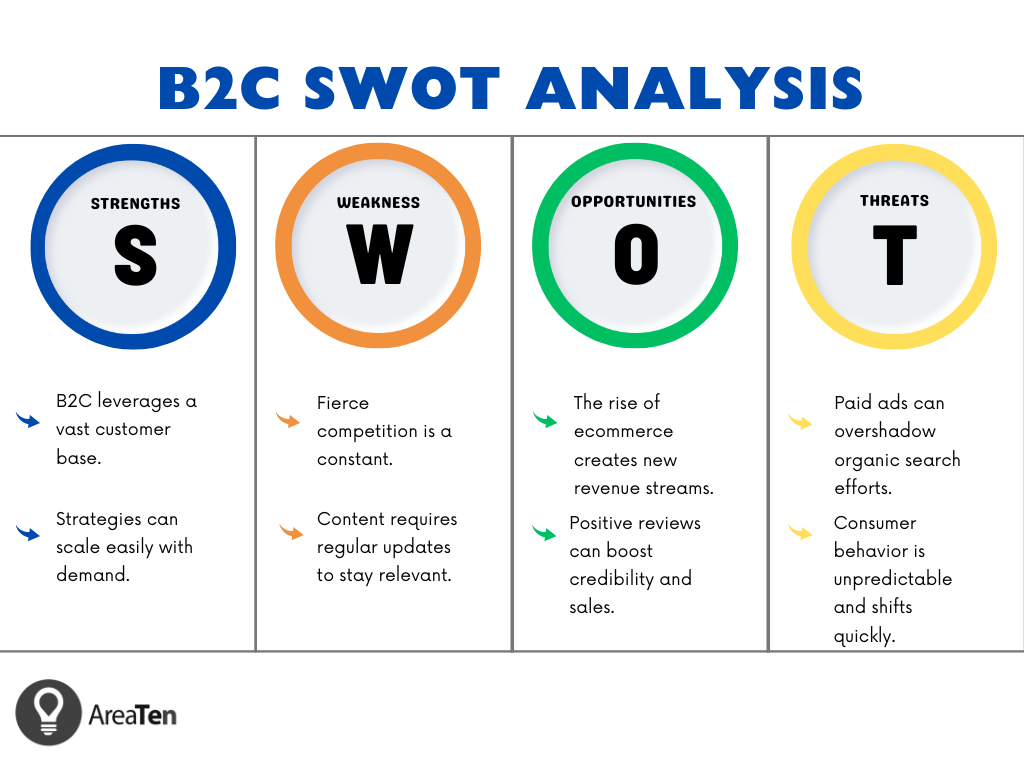
Business SEO services offer significant benefits for B2C, B2B, and SaaS companies by improving online visibility, driving traffic, and boosting ROI. This article explores key advantages and provides a SWOT analysis to help businesses understand how SEO can fuel sustainable growth.
Having a website is great, but if the right people aren’t seeing it, it won’t do much good. That’s where SEO comes in.
Business SEO services are all about helping your website show up more prominently in the search engine results pages. These services will typically involve the following tasks:
The goal here is to make sure your site meets the mark for both Google and your audience, helping it rank higher in the search results. This, in turn, gives you more organic traffic, improving your visibility and giving your brand more credibility.
No matter what industry you’re in, having a strong online presence is key to staying competitive.
These days, when people need a solution, the first thing they turn to are search engines. Google alone handles around 8.5 billion searches every day (Source: Hubspot), offering businesses a golden opportunity to get noticed.
If your competitors are seeing more success than you, it might not be because they’re better; it’s likely that they just know how to be more visible online, often thanks to smart SEO strategies.
SEO is like the key that opens doors for growth and helps turn visibility into real business success.
And the best part is, this is true no matter what type of business you run.
Whether you’re in B2C, B2B, or SaaS, SEO services can bring a lot of hidden advantages. If you’re curious how SEO can give your business a boost, then read on as we discuss each of these benefits in greater detail.
B2C businesses thrive when they nail customer needs head-on.
Luckily, SEO lets you tap into exactly what your audience is searching for, whether it’s products, services, or how-tos. For instance, smart keyword research and SERP analyses can give you insights that let you craft content that really connects with your audience. When Google sees that the content is relevant and adds value by solving problems, the result is often a boost in rankings.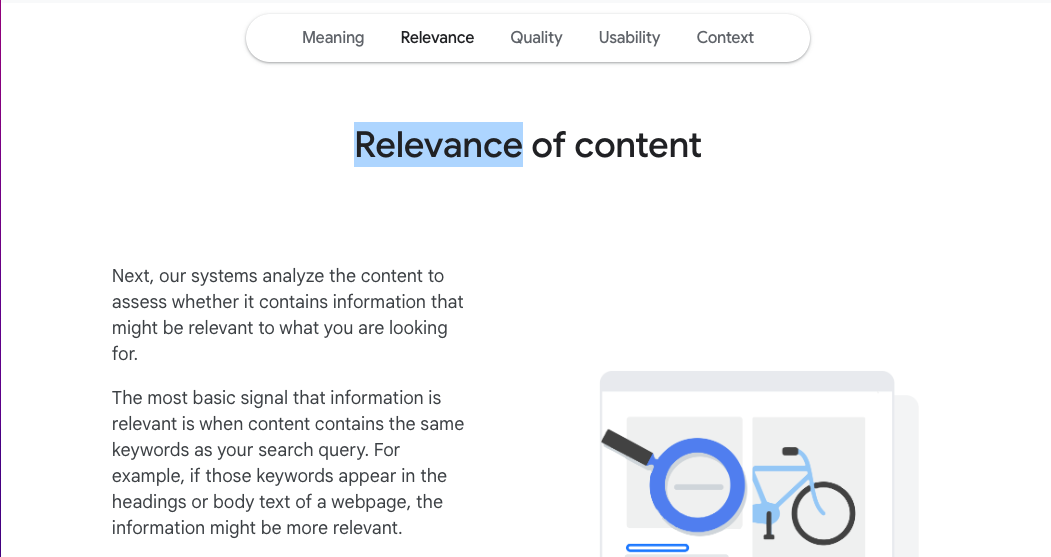
Source: Google
The outcome is more visibility, more targeted traffic, and better-qualified leads coming straight to your door.
With B2B, SEO is about delivering solutions.
Businesses need insights that help them tackle real challenges. If you want to position your brand as the go-to expert that has all the answers, you can build authority by creating SEO-optimized blogs, white papers, case studies, and industry reports.
For example, picture a logistics company creating a guide on supply chain efficiency. This guide is very well-written and effectively addresses a critical pain point. If this guide ends up ranking highly on industry-specific searches, the logistics company can establish a lot of trust with this one piece of content, making it indispensable in the eyes of decision-makers.
Now, imagine having a website filled to the brim with high-value content like this, all fully optimized to rank higher on search engines. This is the power of SEO—it transforms your website into a powerhouse that just keeps on building your brand’s credibility and authority over time.
Even for SaaS, intent is everything. People are always searching for solutions to their problems, and if your content addresses those pain points early, you’re already ahead.
Using SEO to create tutorials, case studies, and guides aligned with the right keywords helps pull in leads right at the awareness stage. When you provide customers with the precise answers they’re looking for, you position your SaaS company as a trusted solution from the get-go.
SEO makes sure you’re meeting potential customers right where they are in their journey, which means better odds of getting them to convert.
Driving traffic to your website is crucial, but how you do it—and how much it costs—makes a difference. SEO is the king of this, reducing the cost of customer acquisition by 87.41% on average compared to digital advertising (Source: Terakeet).
SEO is capable of efficiently capturing organic (unpaid) traffic by targeting both head and long-tail keywords.
The slight issue with long tail keywords, however, is that there will usually be thousands of relevant terms to target for every business. Fortunately, with programmatic SEO, which uses AI to mass produce content, businesses can create content for all of them without the expensive and time-consuming manual labor.
With both head and long tail traffic coming in, you can nurture low-intent visitors while swiftly capturing high-intent leads that your competitors are missing.
When people are considering SaaS platforms, they usually want to dig into specific features before making a choice.
With B2B SaaS SEO, you can start swaying these prospects to your side even while they’re still evaluating their options. You can do this by optimizing for feature-specific keywords—for instance, “email automation” for a CRM SaaS company.
If the company ranks well for this keyword, it can capture the attention of prospects looking for that specific feature. And if the company capitalizes on that by offering detailed, helpful guides, it can position itself as the go-to option when prospects are ready to commit.
So, if you want to showcase what makes your platform stand out and guide prospects all the way to the conversion stage, focus on those feature-related SaaS head terms.
When it comes to B2C businesses like ecommerce platforms, long tail keywords are a goldmine.
In fact, 46% of Amazon’s organic performance comes from long tail pages.

If you’re an apparel retailer, then capturing traffic from countless searches like “best running shoes for flat feet” or “lightweight breathable walking shoes for men” would be a dream come true.
Well, with the magic of programmatic SEO, it doesn’t have to be just a dream anymore. With programmatic SEO, you can easily create content for all these niche keywords without wasting tons of time and resources.
If you’re still deciding between traditional SEO vs programmatic SEO, the latter always comes out on top whenever you have to target this many keywords.
This automated content production process is kind of like a funnel that swoops in and directs all of those potential customers straight to your products. Since long tail keywords have an average conversion rate of 36% (Source: The Hoth), the odds are going to look good for your bottom line.
When you strike the right balance between head terms and long tail keywords, you’re setting yourself up for success in B2B marketing.
Head terms like “enterprise collaboration tools” help you cast a wider net, establish authority, and attract broader audiences early in the research phase. On the flip side, long tail keywords like “data compliance tools for financial institutions” are highly specific and target decision-makers who already know what they need—in other words, people who are closer to making a purchase.
By blending these two approaches, you can attract a mix of both broader audiences and high-intent decision-makers. This leads to faster customer acquisition and steady growth over time, all while boosting your overall authority in the field.
You want visibility where it counts—your customers’ specific regions.
With 46% of all Google searches looking for local information (Source: Hubspot), capitalizing on that local search intent becomes essential.
So, how do you make your business more visible to local audiences? You incorporate relevant keywords and region-specific queries, like “digital marketing agency Darwin.”

This strategy involves using local citations and reviews, which both bolster your online reputation and boost your rankings in local searches. Even if your business doesn’t have a physical storefront, local SEO allows it to appear in the searches where your potential customers are looking.
For B2B, B2C, and SaaS, not all customers are created equal. What you really want to reel in are the loyal customers high in lifetime-value (LTV).
High-LTV customers are the ones who stay, spend, and refer others to your business. If you get a handle on how much revenue a customer will bring over time, you can fine-tune your marketing spend and strategy to focus on what really matters. Why focus on short-term wins when you can cultivate long-term relationships that just keep on giving?
Read our in-depth guide about how LTV can accelerate your business growth.
Around 53% of marketers dedicate at least half of their marketing budgets solely on lead generation (Source: Sender). If you’re spending that much on acquiring leads, they should at least be the quality ones that can positively impact your revenue.
This is what SEO excels at. It drives the right kind of traffic to your website—the aforementioned high LTV customers who are very inclined to spend money on whatever you’re offering.
If you’re targeting long tail terms and crafting content that addresses your audience’s needs (as you should), then those high-LTV customers are ripe for the picking. A B2C brand, for example, can try creating content that shows off its product’s longevity or overall quality. This is going to build trust and encourage repeat purchases in the long run.
The best part is that if your SEO efforts are ongoing, you can keep securing more and more of these loyal customers who will enrich your bottom line for the long haul.
When you consider how to increase CLV through SEO, think about more than just the immediate value you can gain. Focus on what’s possible down the road.
LTP shifts the focus to how you can grow customer relationships and unlock their full potential. SEO plays a huge part here by keeping customers engaged with personalized, evergreen content that grows with them. In B2B, for example, a simple case study could turn into an entire webinar series, pushing customers to consider upsell opportunities.
Quick wins and one-off conversions are great, and you can achieve those with SEO. But the true value of it lies in fueling long-term growth alongside your most valuable customers.
SEO and paid ads are both fantastic additions to any marketing strategy.
But with paid ads, it’s wise to be cautious with your spending. With the average small to medium business investing up to seven times more in PPC than in SEO (Source: Agency Analytics), it’s not unheard of for costs to start getting out of hand.
This is why SEO can be the perfect partner for your paid media management strategy.
With SEO, once you achieve high rankings, organic traffic flows consistently without ongoing ad spend. This is especially beneficial for B2C businesses, as it ensures long-lasting visibility at a fraction of the cost of PPC campaigns.
Most businesses pay $0.11 to $0.50 per click in paid ads (Source: WebFX), and while that might appear affordable initially, costs can skyrocket with high traffic volumes. When debating between SEO vs. PPC, take a look at the low hanging fruit before you.
Often, the right strategies that can produce results. At Area Ten, for example, our SEO programs consistently outperform paid search by at least 30% with greater scale.
In B2B, trust is everything. SEO helps build that trust by providing content that genuinely helps your audience deal with their pain points.
Think about it—if a commercial HVAC company ranks for something like “why monthly HVAC maintenance is a must,” they’ll be attracting new leads while also educating potential customers, solving their problems upfront. Over time, this builds trust, which eventually leads to long-term contracts that boost client retention and ROI without having to constantly rely on paid ads.
SaaS companies need a constant flow of customers, but relying on paid ads can really cut into profits.
This is where SEO stands out as a sustainable solution. Instead of spending a little too much money on ads, you can create valuable, evergreen content like tutorials and feature guides. This kind of content works for you around the clock, driving signups and conversion rates without any ongoing ad costs.
For SaaS brands, building a solid library of well-optimized, helpful content can act like a customer magnet. It attracts potential users and reduces your dependence on paid ads, all while still hitting your growth goals.
In short, SEO is a cost-effective way to keep the customer pipeline flowing—without the price tag of constant advertising.
While SEO is great for long-term website traffic, it does need regular fine-tuning to stay ahead of search engine changes. But here’s the good news: the right tools can make a huge difference in staying competitive.
Traditional SEO campaigns often require constant adjustments and manual work, especially when focusing on long tail keywords. In cases like this, our proprietary CMAX technology can streamline the process significantly.
This programmatic SEO platform lets you generate thousands of quality, SEO-optimized pieces at unmatched scale and speed. Even better, it tracks performance in real time and adapts instantly to algorithm updates, so you can keep growing without the hassle of manual tweaks.
With tech like CMAX, you’re looking at scalable content creation and continuous optimization that keeps driving growth, all while staying hands-off.
Search queries are like little clues that reveal what customers are craving. B2C brands can tap into them to identify emerging trends, allowing them to innovate products.
A fashion retailer might notice a surge in searches for “sustainable clothing.” If they pick up on this trend early, they can pivot their product line to include more eco-friendly options, aligning with growing consumer demand.
This is just one example of how leveraging SEO insights allows B2C businesses to stay current and relevant. Stay flexible, and you can quickly adapt and take advantage of any shifts in the market.
For B2B companies, SEO insights can reveal things that their industry needs, allowing them to refine their service offerings.
The key here is competitor analysis. Take a look at what businesses like yours are doing and ask yourself:
With these SEO-driven market insights, you can stay ahead of the curve, making sure your offerings stay competitive and relevant. It’s a great way to spark fresh ideas and keep your services innovative.
SEO can offer SaaS companies a sneak peek into what users are really after.
A simple way to do this would be to analyze Google Trends. If you take a look at the trending keywords in your industry, you can spot which features are in high demand.
For example, if “AI transcribe audio to text” starts spiking on Google Trends, it’s a clear sign that users want transcription features. This helps companies fine-tune their product development to match what people actually need in real-time.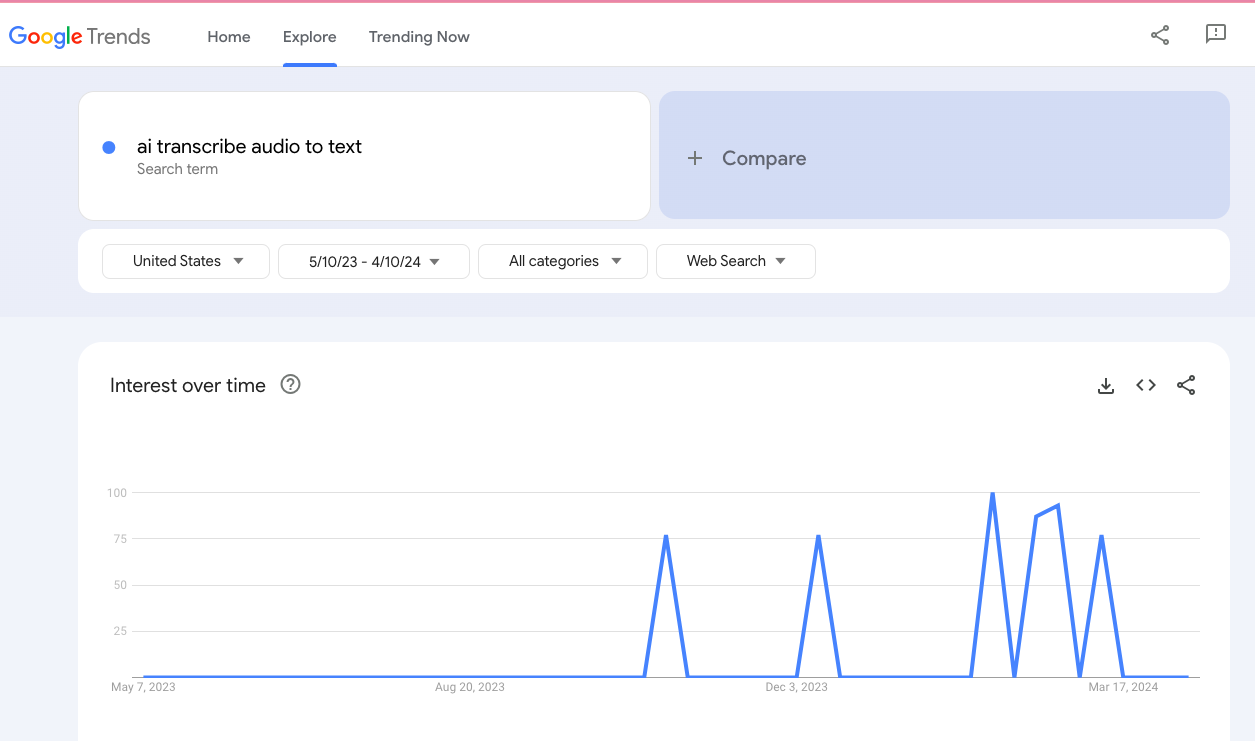
Keep any recent trends in mind as you develop new software features, and you can ensure that your SaaS product remains relevant.
Now that we’ve covered the benefits of SEO across industries, let’s go one step further.
Here’s an in-depth SWOT analysis (Strengths, Weaknesses, Opportunities, Threats) for each vertical—B2C, B2B, and SaaS.

B2C businesses benefit significantly from SEO due to their large and diverse customer base.
SEO allows B2C companies to tap into a broader market by optimizing for a variety of keywords, creating a robust potential for scalable strategies. That said, the competition is tough. B2C businesses have to keep their content fresh and their sites updated regularly to stay relevant in search rankings. On the plus side, SEO also allows them to jump on ecommerce trends and build trust through positive online reviews.
One challenge they face is the constant presence of paid ads, which can sometimes push organic search results further down the page. But if B2C companies strike the right balance, SEO can help them stay competitive and continuously expand their customer base.
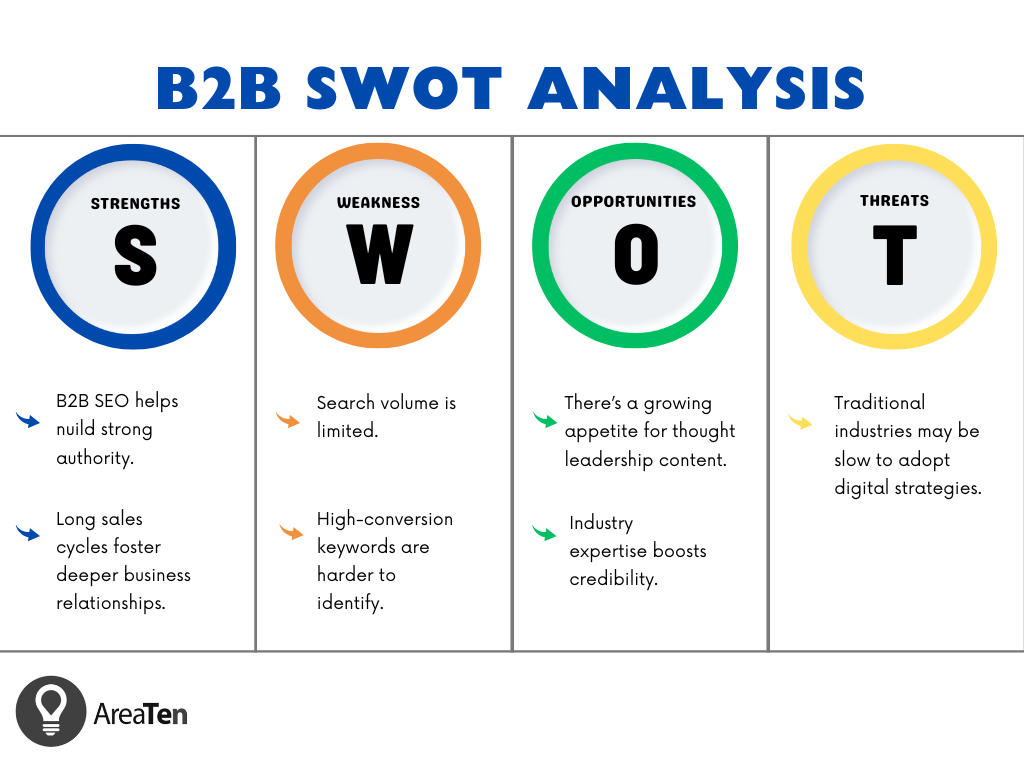
B2B SEO strategies are all about establishing authority through valuable, educational content.
Sure, B2B businesses might see lower search volumes compared to others, but the real advantage comes from using highly specific industry keywords. What’s more, with those longer sales cycles, there’s time to build deeper business relationships.
The tricky part? Finding high-conversion keywords while keeping up with constant changes in the market and search algorithms.
But make no mistake—when a B2B company ranks well for the right industry terms, they build a lot of trust and credibility, which is the key to long-term partnerships.
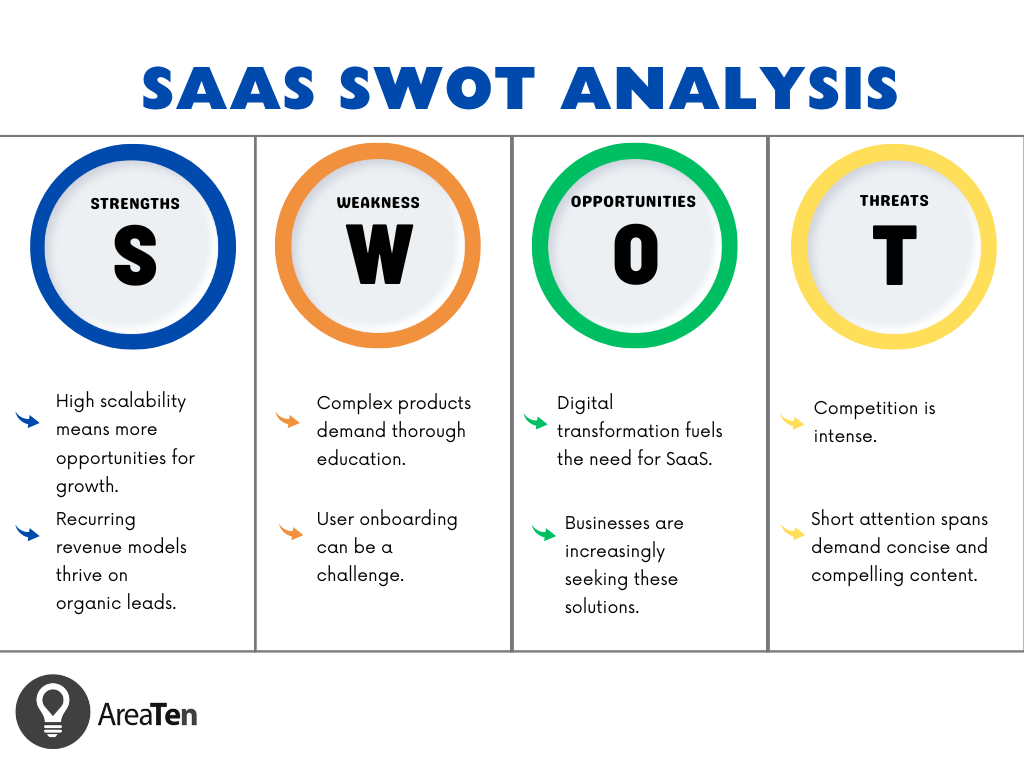
SEO is crucial for driving organic traffic and achieving growth in the SaaS industry.
The recurring revenue model of SaaS makes capturing organic traffic through SEO both scalable and essential. Educational content is what really helps convert leads, but it requires considerable effort to simplify and explain complex products.
With the rising demand for SaaS solutions, there are numerous opportunities for growth, though the intense competition in the sector poses a constant threat to maintaining visibility.
That’s why having a strong SEO strategy is crucial. If you want to keep your growth steady in a crowded market, you have to keep outdoing your competitors in those search results.
A top SaaS company in the US came to us with a big problem: they were spending way too much on paid ads, and the return on that investment was starting to drop. It was really putting pressure on their profit margins.
Sticking to paid ads alone just wasn’t cutting it. They needed a long-term plan that wouldn’t break the bank. So, we focused on driving more organic traffic through smart SEO strategies.
The client was spending $120,000 per month on paid advertising, which was severely impacting their profit margins.
The goal here was to cut back on these ad expenses without compromising lead generation. We wanted to reduce costs, all while maintaining or even improving their lead flow through increased organic traffic. SEO was the clear path to create more sustainable inbound traffic and enhanced visibility for long-term gains.
We implemented a strategic SEO approach that focused on organic growth and reducing their dependency on paid ads.
We conducted in-depth research to identify high-intent long tail keywords directly related to the SaaS platform’s core features, such as “best automation tools for remote teams” and “project management software for startups.”
Zeroing in on long tail keywords allowed us to capture users further along in the decision-making process who were already considering specific tools and platforms. This strategy ensured that the content would engage potential clients with a strong buying intent.
The outcome was a better match between what the client offered and what users were seeking.
We created content specifically designed to answer key questions and pain points of the target audience.
Think detailed tutorials, in-depth feature breakdowns, and real-world use case examples, all optimized for SEO so we could rank for the key search terms that mattered. In doing so, we saw a spike in engagement and built trust along the way.
We improved the site’s structure and performance, making sure it was easy for search engines to crawl and index the content. This meant speeding up load times and making it play well with mobile devices, allowing most searchers to access it easily.
A well-structured site does wonders for user experience, and it also boosts your chances of climbing the search engine rankings. These technical tweaks played a big part in supporting our SEO strategy and getting more eyes on the site.
In just three months, we helped the client cut their monthly ad spend by a whopping $48,000, all while maintaining lead flow through a 24.3% increase in organic traffic—no extra ad dollars needed. The strategic shift to SEO also resulted in a 29.7% increase in organic revenue, which meant they could put their budget to better use.
In the end, this client found a way to grow sustainably and gain more traffic without the headache of unpredictable and expensive paid ads. A total game changer!
Area Ten is not your typical SEO service provider in Australia. We’re known for delivering big results fast.
If you’re a business owner looking to fuel your company’s growth, our SEO services are the answer. Take advantage of our corporate SEO expert team and innovative programmatic SEO technology, and you can expect results 4x faster and at 10x the scale of traditional approaches.
Are you ready to take your business to new heights? Inquire now.
Book a free video consultation below to see how your SEO & Paid Media campaigns are performing against global benchmarks in your industry.
We’ll uncover tangible opportunities to grow your business in just 6 weeks, including: